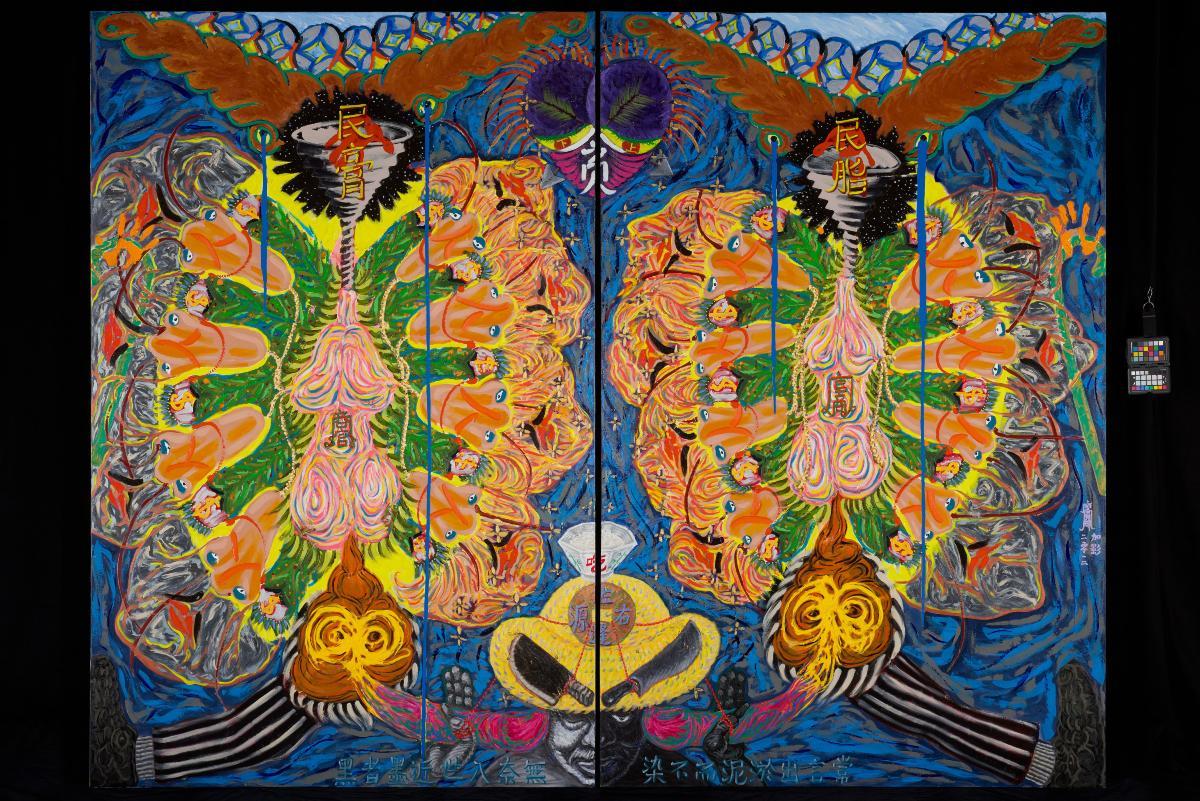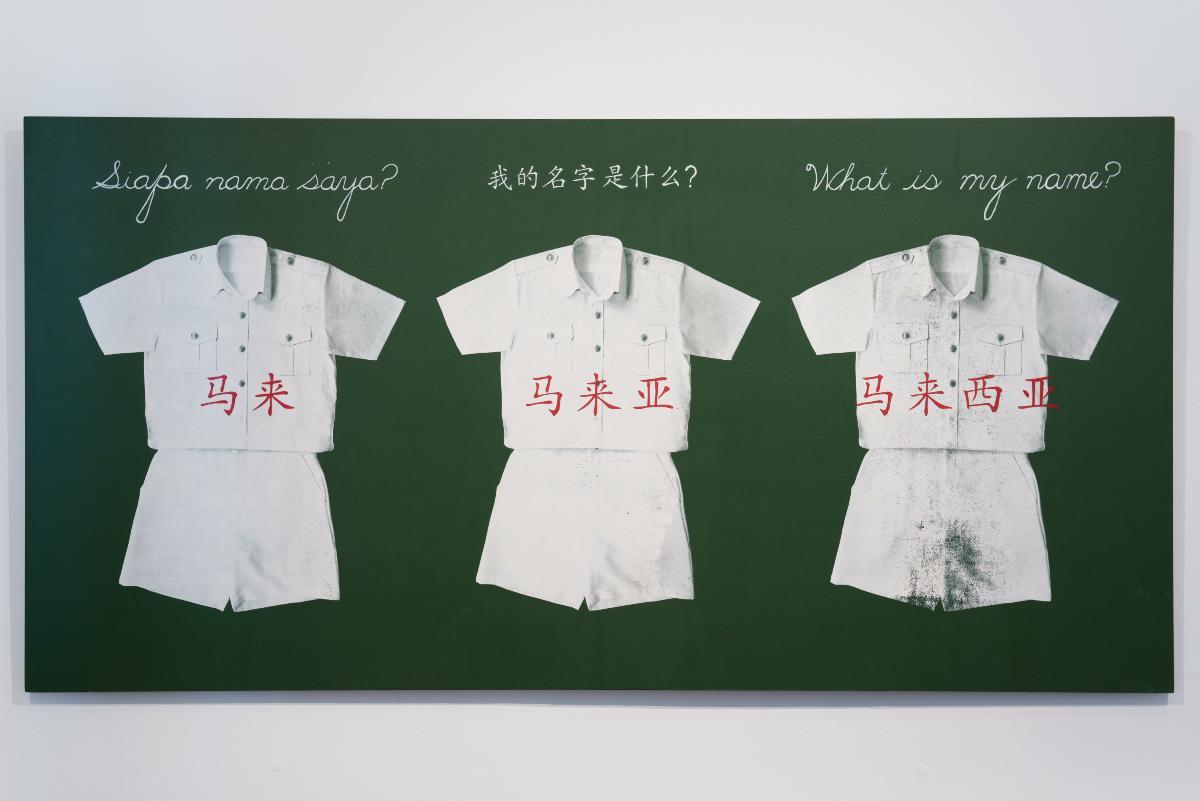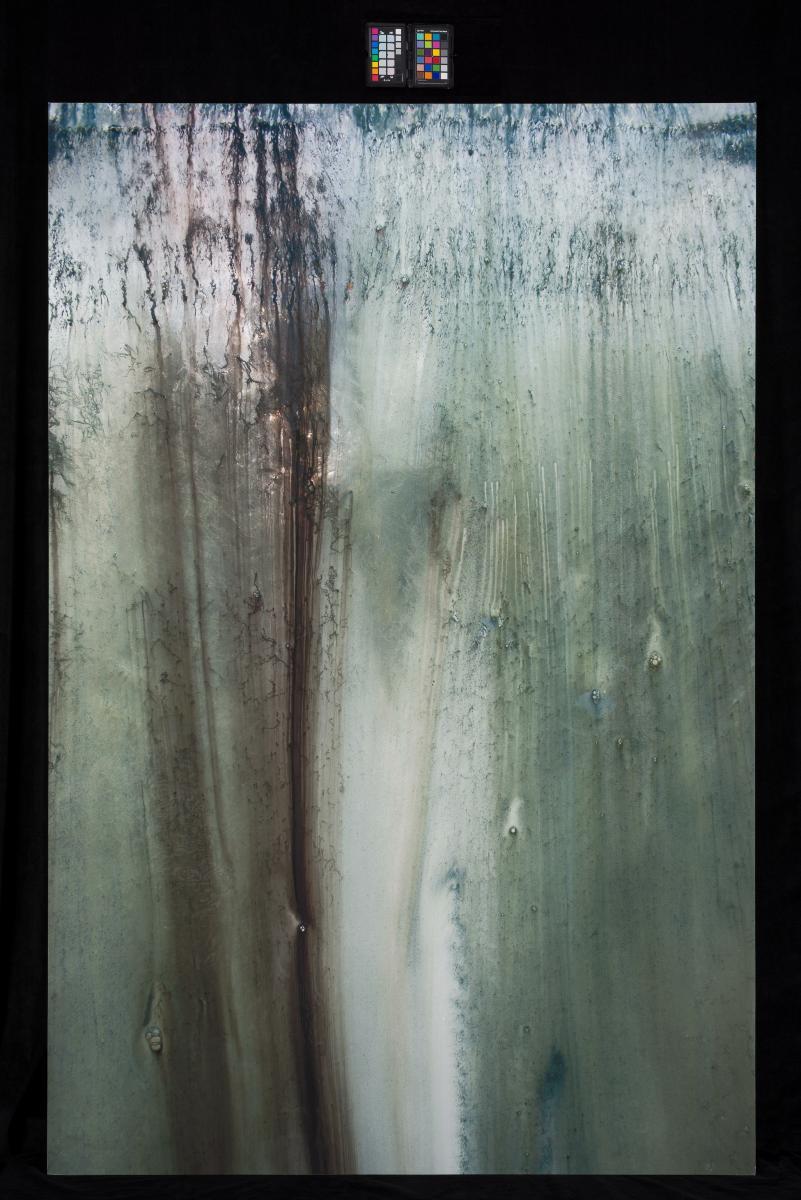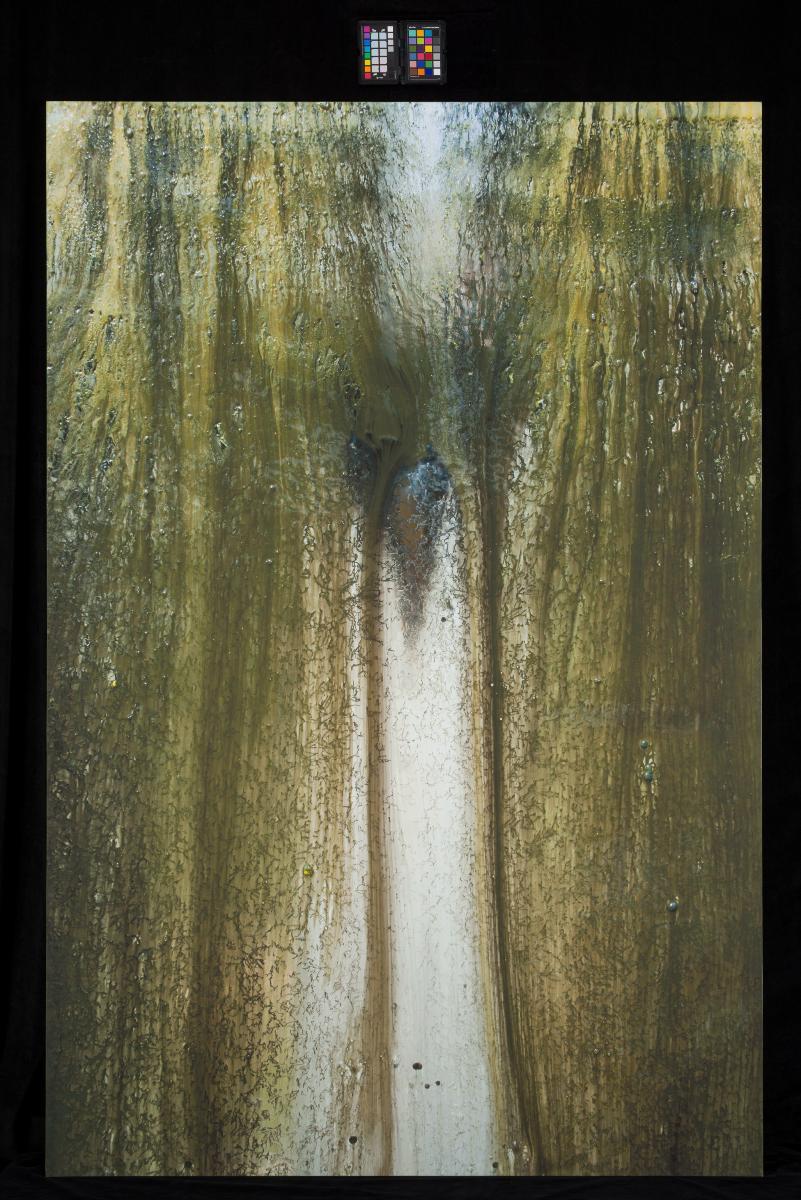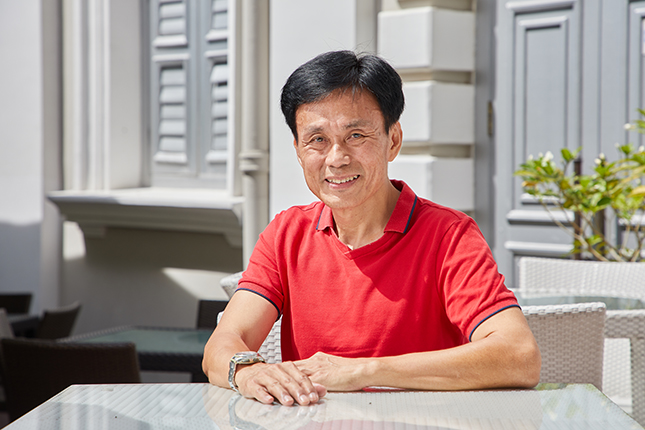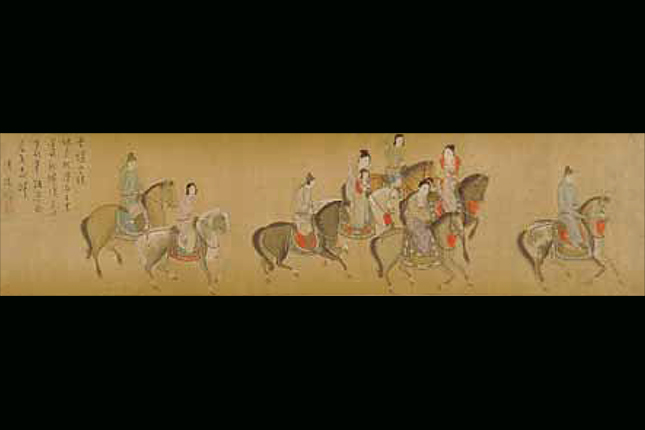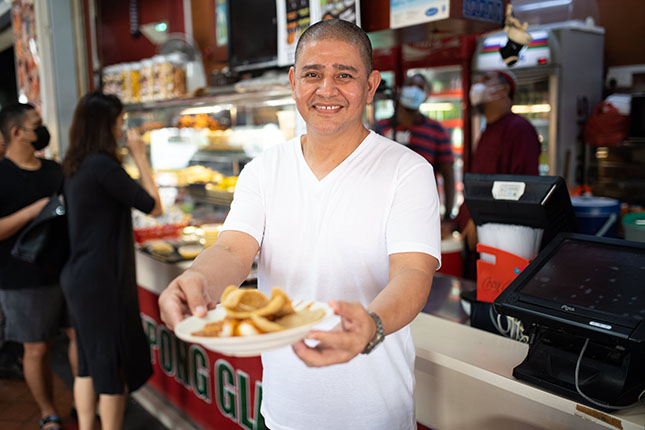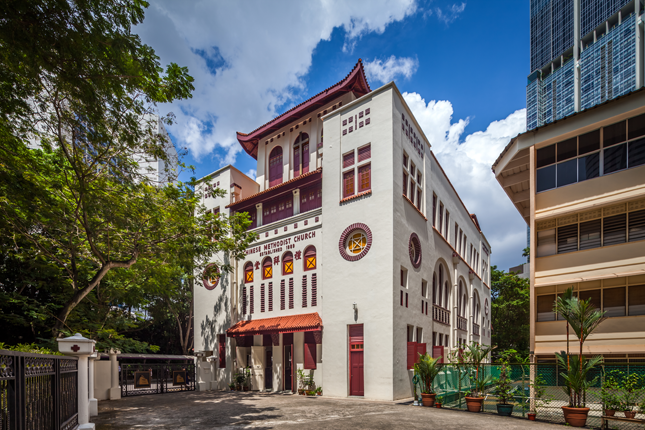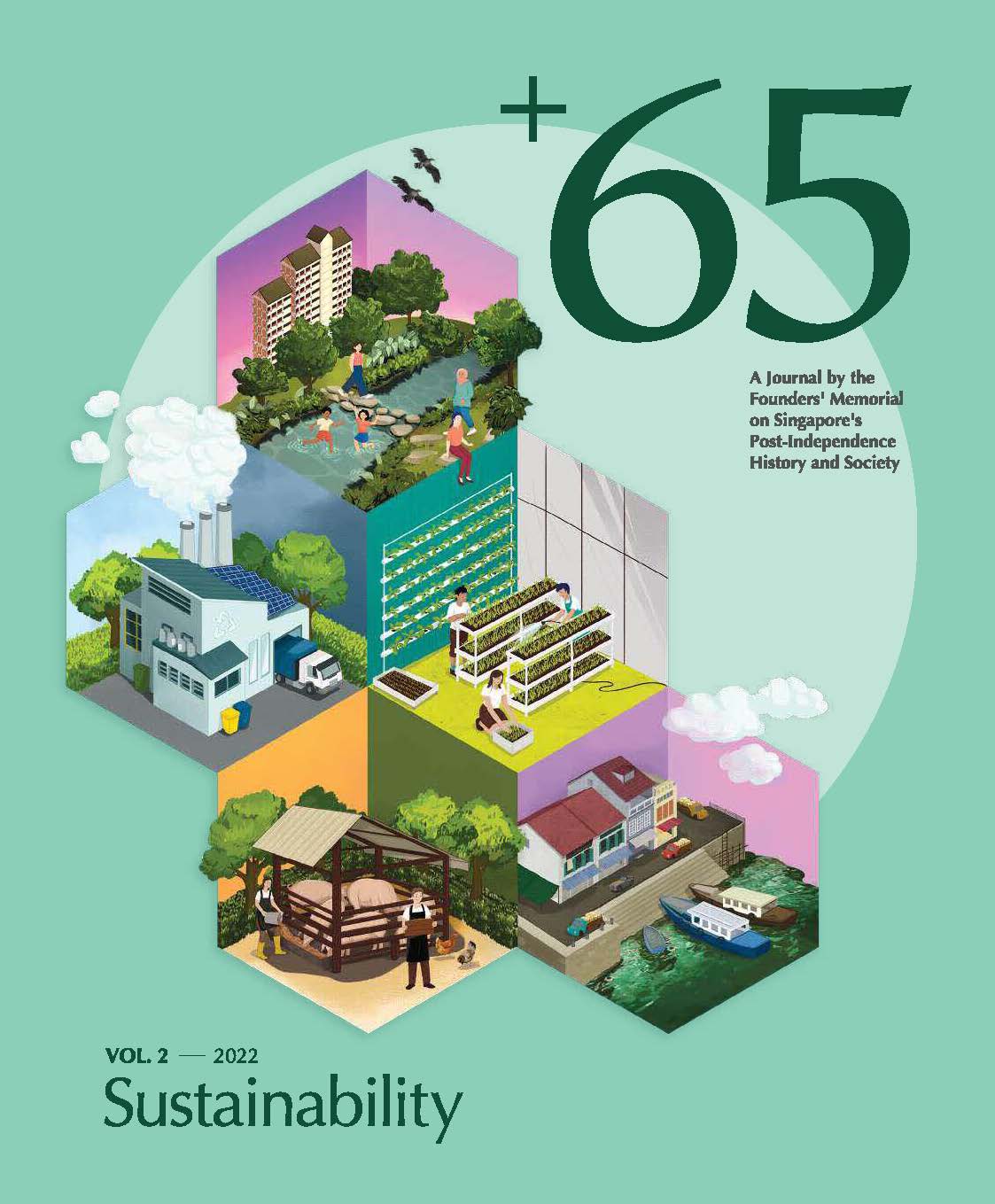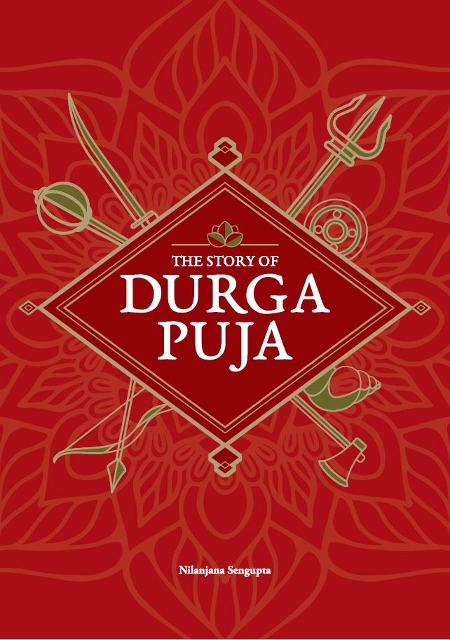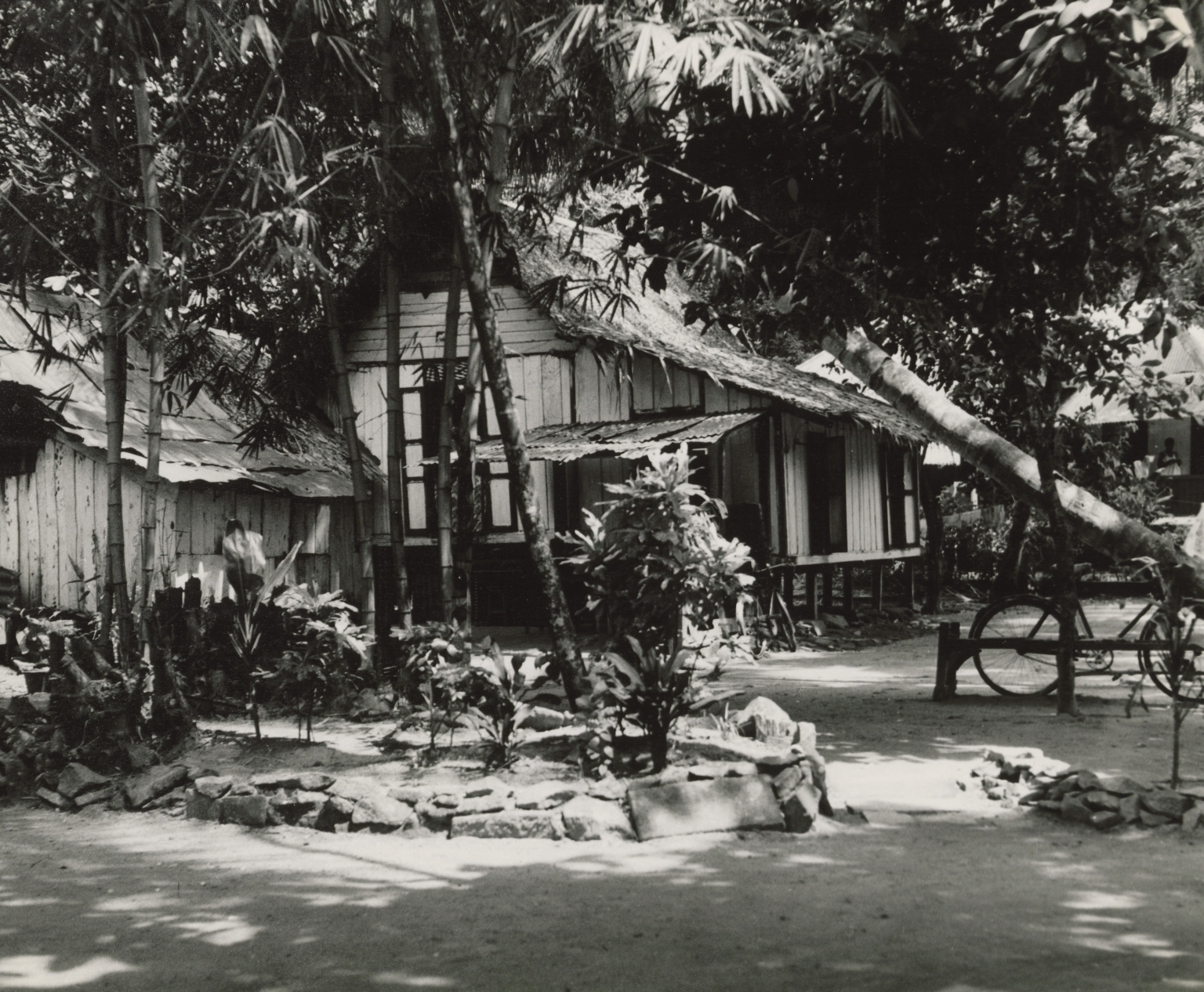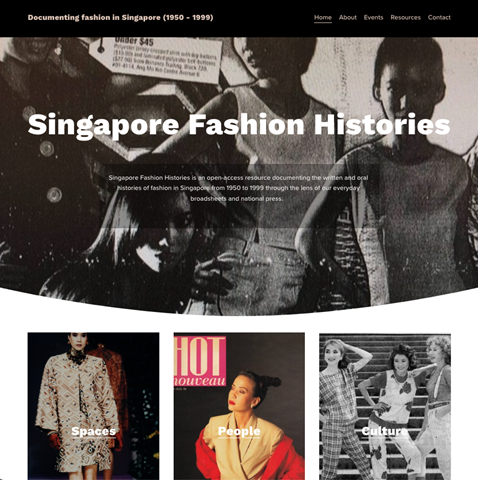Liew Kwai Fei is a Sino-Malaysian artist whose primary medium is paint. Having graduated from the Malaysian Institute of Art (MIA), Liew got his start as an artist with the Ruman Air Panas collective (alongside such figures as Yap Sau Bin, Chong Kim Chiew, Phuan Thai Meng et al). The work produced in the early part of his career were non-figurative canvases in the lineage of mid-century abstraction, and its sub-categories of geometric abstraction, colour field painting, hard-edge painting and minimalism. Beginning in 2011 and 2012, however, Liew’s practice took a radically different tack. At a solo exhibition in 2012 at Valentine Willie Fine Art (where he had previously been employed as an gallery assistant), entitled “绘字写画, 雅俗共赏– Painted Words and Written Paintings: For the Refined and For the Masses”, he presented a series of compositions that included a grotesque, surreal iconography drawn from a personal and private visual language, with generous helpings of textual elements based on Chinese characters, sayings and cross-cultural punning. The present work, 商 Tolong 官,官 Tolong 商, was first shown in the VWFA solo exhibition. Being a former employee at the gallery, Liew was exposed to a kaleidoscopic range of artistic styles and a relatively liberal artistic atmosphere, which represented a liberation for him, but also accentuated his discomfort with that particular social milieu, which was English-speaking, westernized and globalized. Hailing from a Chinese-speaking, working-class background, Liew spent 3 years at MIA, specializing in traditional Chinese ink painting and calligraphy – a considerably brief education for an artistic beginner whose childhood and teenage years were defined by cultural signposts such as Japanese manga, Cantonese TVB dramas and popular cinema from Hong Kong, and local vernacular culture. In other words, Liew’s socio-economic class and attendant education marked out his outlook and cultural worldview as an artist, and the shift in his aesthetic language stemmed from a growing desire to reflect that background and the social divide he experienced; the resurgence of figurative forms in his formerly abstract compositions alludes to the tenets of both Marxism and modernism. (At the same time, Malaysian society – including both its middle and working classes – was going through a significant change, due largely to a popular social movement, Bersih, agitating against blatant corruption in the highest levels of the Najib administration.) From an abstract idiom devoid of narrative, Liew tried to develop a visual language that could speak to a local audience unfamiliar with the concerns and aesthetics of contemporary art in a globalized vein. Here, Liew also introduced calligraphy into his pictorial compositions, with handwritten Mandarin and Malay words in thick acrylic paints, creating readable logograms enfolded into his visual iconography. Beginning in 2011, the Chinese character 人(person, human) has appeared frequently in Liew’s works; it also figured in into other related words that share the same radical, such as in 贪(greed). In 官 Tolong 商,商 Tolong 官, the logogram of 人was embedded in the motif of cash coins; it has been multiplied and painted as the orange eyebrows or the black mustache, personifying both the official (官) and the businessman (商). Other elements issued from different registers of vernacular culture, ranging from amateurish mural painting in Chinese temples to the unrefined visuals of comic books from both Hong Kong and Japan, laid out in symmetric composition that recalls the tao-tie of ancient Chinese bronzes, and orchestrated like a chorus composed of axioms, myths and tricksters, depicting an absurd scene extracted from a national saga. The painting shows us an enclosed man-made system that looks like a pair of contaminated lungs in the process of an alchemic transmutation fueled by a permanent restructuring of power due to the unapologetic practice of *nepotism and *cronyism in the country.




